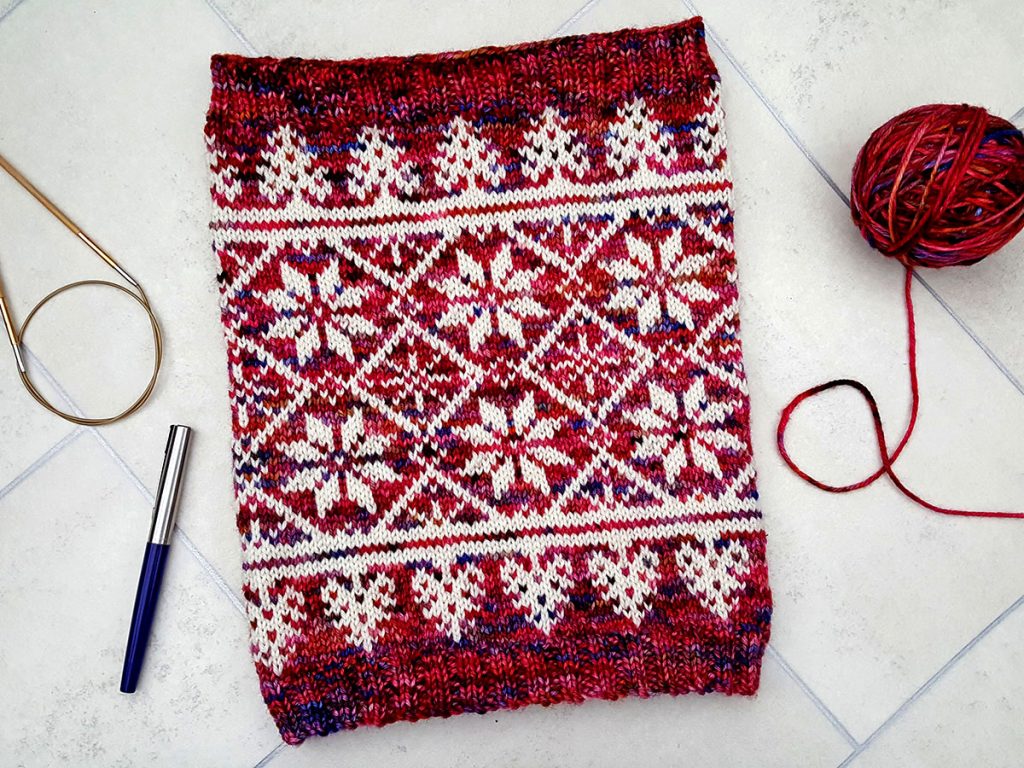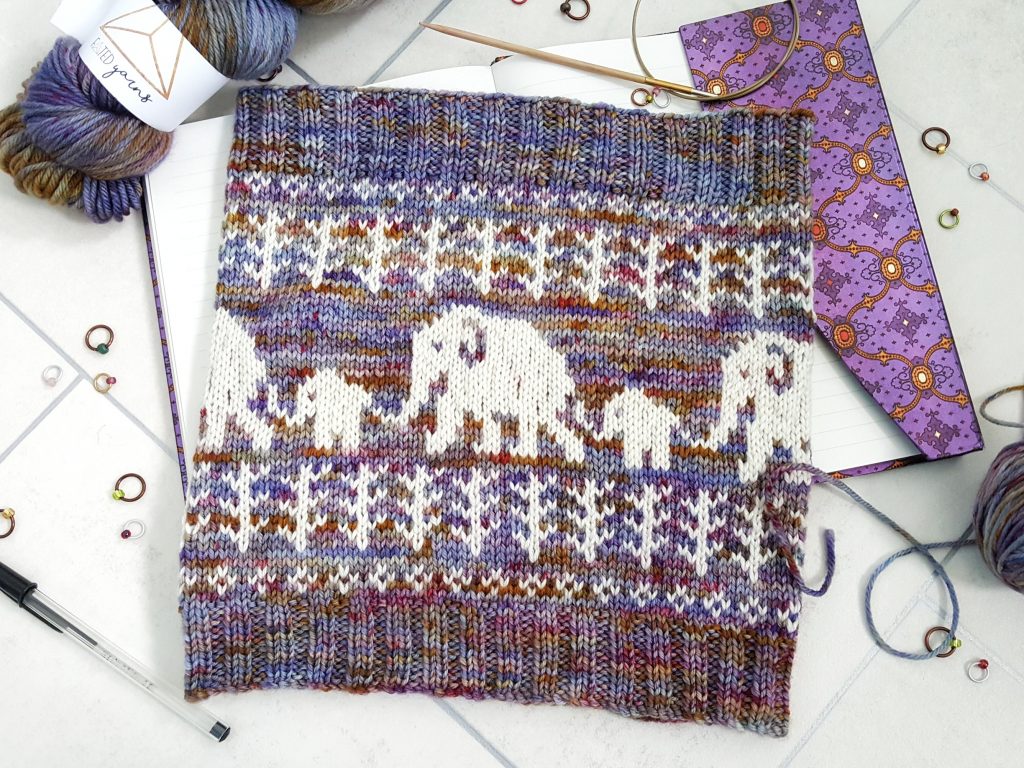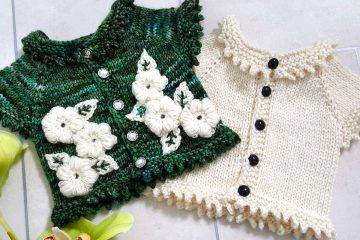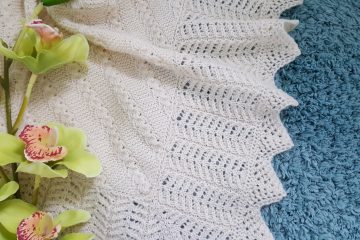Does your colourwork knitting have ladders and holes in it? Does your colourwork knitting pucker up? Does your colourwork knitting have long loose floats at the back which catch on things?
When I first started knitting colourwork I absolutely hated it. My work was horrendous.
There were ladders everywhere, sections fell apart from each other, areas pulled in to each other, it wouldn’t go flat, and it was a tangled mess at the back.
Actually horrendous is probably an understatement. I gave up colourwork knitting for a long time.
Then one day I came across an article that explained about keeping the floats neat (the long strands of yarn at the back that aren’t being knitted). It recommended wrapping the yarns round each other every 5 stitches at a minimum and also for every colour change. So I tried this and my colourwork knitting did improve.
But wrapping the yarns around each other was cumbersome and frustrating. And my tension was awful from having to keep putting the knitting down and untangling the twisted mess of yarn balls. So I gave up again.
Then one day a good friend of mine was leaving and moving away, and I needed to make her a present. I found the PERFECT seahorse pattern, BUT it was colourwork. Argh!
After more pattern searching no other pattern was even remotely right. So I had to figure this out.
After reading lots of blog posts and tutorials I started. And it went OKish. But I frogged it still and searched again for another pattern.
But I still found nothing. So I cast on again. And it started going quite well. In fact, I actually finished the project, and gave it to my friend, who loved it. Seahorses were her favourite.

And now, after such a horrendous start to colourwork knitting, several years later I’m writing a knitting pattern book based on colourwork!

So what did I do differently for my colourwork knitting to start to become a success? Here are my three not-so-secret secrets for neat colourwork…
Secret One: Needle Size
I’m going to go against every other colourwork knitters article I’ve ever read on this point. Go down one needle size than what is recommended for your yarn. This is why you’ll find my colourwork patterns for DK are written using 3.5mm needles, when a 4.0mm needle is most commonly recommended for that yarn weight. Typically when knitting colourwork your tension will be tighter. For this reason every designer I’ve come across recommends going up needle sizes to counter that. It makes sense if you want to counter the change in tension. But that’s not what my goal is. I want my colourwork to stand out. Using a smaller needle gives a slightly denser knit finish to the fabric which keeps the stitches close together, and forms a clearer image in your colourwork. This also helps prevent unwanted holes and gaps from forming.
Secret Two: Three Stitch Floats
When knitting several stitches in the same colour, twist the yarn every 3rd stitch at a minimum. My floats are at most 3 stitches long. Never 4 or 5. At the same time regularly spread out the stitches you have just worked on the right hand needle. This helps keep the tension of the unused yarn carried at the back even, and prevents puckering of the fabric between colour changes. It also keeps the back of the work tidier and with fewer long strands that are at risk of being caught.
Secret Three: Colour Dominance
When working a colourwork pattern there is typically a background colour and a contrast colour. Typically you want the background colour to be there but, well, in the background. And you want the contrast colour to stand out and be prominent. This is called colour dominance. To achieve colour dominance you want to hold and carry the yarns in different places at the back of the work. Between the two yarns, the background colour needs to be held and carried along the top. This creates a shorter recessive stitch. The contrast colour needs to be held and carried underneath the background colour. This creates a longer (=more yarn) more prominent stitch.
Note that the colour you want to be dominant can change throughout the project. In the Never Forgotten Cowl the sample knit uses the purple as the background colour, except when knitting the eyes and ears of the elephant where I switched the position of the yarn to make it the dominant colour.

And those are my not-so-secret secrets. If you’re still unsure where to start with knitting colourwork I’d recommend the Never Forgotten Cowl featured above because the diamond and rosemary stitch motifs are great to get started practicing colour dominance, before moving onto the larger elephant designs.
Best wishes, – & happy crafting,
Sam xox
When you sign up below you’ll get new blog posts directly into your email inbox!



0 Comments